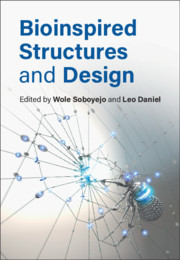Book contents
- Bioinspired Structures and Design
- Bioinspired Structures and Design
- Copyright page
- Contents
- Contributors
- Preface
- Part I Materials
- Part II Structures
- Part III Natural Phenomena
- 10 Aquatic Animals Operating at High Reynolds Numbers
- 11 Flying of Insects
- 12 Designing Nature-Inspired Liquid-Repellent Surfaces
- 13 Biomimetic and Soft Robotics
- 14 Bioinspired Building Envelopes
- Index
- References
10 - Aquatic Animals Operating at High Reynolds Numbers
Biomimetic Opportunities for AUV Applications*
from Part III - Natural Phenomena
Published online by Cambridge University Press: 28 August 2020
- Bioinspired Structures and Design
- Bioinspired Structures and Design
- Copyright page
- Contents
- Contributors
- Preface
- Part I Materials
- Part II Structures
- Part III Natural Phenomena
- 10 Aquatic Animals Operating at High Reynolds Numbers
- 11 Flying of Insects
- 12 Designing Nature-Inspired Liquid-Repellent Surfaces
- 13 Biomimetic and Soft Robotics
- 14 Bioinspired Building Envelopes
- Index
- References
Summary
Size does matter. Whether small or large in body size, all organisms obey the laws of physics and thus are subjected to forces imposed by the physical environment. These forces place constraints on the level of performance in regard to physiology (e.g., metabolic rate, heat transfer), morphological design (e.g., skeletal framework, muscle mechanics), and behavior (e.g., predator–prey interactions, flight, locomotor speed). The structural and functional consequences of a change in size are referred to as scaling [1].
- Type
- Chapter
- Information
- Bioinspired Structures and Design , pp. 235 - 270Publisher: Cambridge University PressPrint publication year: 2020
References
- 1
- Cited by



